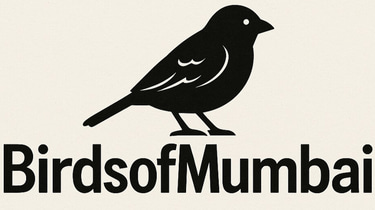The Pigeon Menace in Mumbai: Health Risks and Humane Solutions
Rajiv Soni
11/1/20244 min read
The urban environment of Mumbai, with its high-rise buildings, accessible ledges, and ample food sources, has fostered an explosion in the pigeon population. While pigeons are often perceived as harmless, their overpopulation in urban centers like Mumbai has raised concerns about public health, environmental hygiene, and the quality of life for its residents. This article explores the potential health risks associated with pigeon overpopulation in Mumbai, recommends humane and effective methods to control the pigeon population, and emphasizes the importance of raising public awareness on this pressing issue.
The Health Risks of Pigeon Overpopulation
Pigeons, or rock doves, have long coexisted with humans in urban environments. However, their unchecked population growth has led to various health concerns. Here are some of the primary health risks associated with excessive pigeon populations:
1. Respiratory Issues: Pigeon droppings can carry fungi, specifically Histoplasma capsulatum and Cryptococcus neoformans, which cause histoplasmosis and cryptococcosis, respectively. When pigeon droppings dry and become airborne, they can be inhaled by people, leading to respiratory problems, particularly for individuals with weakened immune systems.
2. Allergies and Asthma: Pigeon feathers, droppings, and nesting materials can trigger allergic reactions in sensitive individuals, especially children and elderly residents. Exposure to these allergens over time may worsen symptoms in people with pre-existing respiratory conditions such as asthma.
3. Transmission of Pathogens: Pigeons are known carriers of various bacteria and viruses, such as salmonella and E. coli, which can cause gastrointestinal issues in humans. These pathogens are spread through droppings, and contamination of surfaces or water supplies can lead to serious health hazards.
4. Mites and Parasites: Pigeons host mites, fleas, and ticks that can infest buildings and homes. These parasites can bite humans, causing skin irritations, and in some cases, they carry diseases that can be transmitted to humans and pets.
5. Corrosion of Infrastructure: The acidic nature of pigeon droppings damages buildings, vehicles, and monuments over time. This not only affects the aesthetics of Mumbai’s infrastructure but also compromises its durability and safety, leading to frequent repairs and added economic costs.
Humane Solutions for Pigeon Population Control
Given the health and environmental risks posed by pigeon overpopulation, controlling their population becomes necessary. Here are several humane and effective long-term solutions:
1. Feeding Regulation: A primary driver of pigeon overpopulation is the easy access to food. Many citizens feed pigeons out of compassion or cultural habit, unaware that this sustains and encourages overpopulation. Designating specific feeding zones in parks or open spaces away from densely populated residential and commercial areas can help manage this. Additionally, enforcing regulations against indiscriminate feeding in public spaces can help limit the food supply available to pigeons.
2. Nest Management: Reducing the availability of nesting sites can significantly impact pigeon populations. This can be achieved through modifications like anti-roosting spikes, which make ledges less appealing for pigeons to land and nest on. Mesh barriers and netting can also be installed on rooftops, attics, and balconies to prevent nesting.
3. Contraceptive Methods: Pigeon contraceptives, like OvoControl, have been developed as a humane method to reduce pigeon populations over time. These contraceptives, mixed with food, prevent pigeons from breeding successfully without harming the birds. This method has been effective in several urban areas worldwide and could be implemented in Mumbai’s high-pigeon-density zones under the guidance of wildlife management experts.
4. Bird Deterrents: Ultrasonic bird deterrent devices emit sounds unpleasant to pigeons, discouraging them from gathering in large numbers. Similarly, reflective surfaces, plastic owls, and other visual deterrents can be placed on rooftops and balconies to keep pigeons away. However, it’s essential to use these methods judiciously to prevent unintended consequences for other urban wildlife.
5. Habitat Modification: Encouraging a shift in the architectural design of buildings can help reduce nesting opportunities for pigeons. Urban planners and architects can incorporate smooth or inclined surfaces, reducing the number of flat ledges pigeons typically use for roosting. Municipalities and residential complexes could also implement pigeon-proof modifications to existing structures to make the environment less favorable for nesting.
Public Awareness and Community Involvement
Addressing pigeon overpopulation requires collaboration between local authorities, residents, and environmental organizations. Public awareness plays a crucial role in achieving sustainable population control, as many citizens unknowingly contribute to the problem by feeding pigeons or creating favorable nesting sites. Here are ways to raise awareness:
1. Education Campaigns: The city government and health departments could conduct education campaigns about the health risks associated with pigeon overpopulation. Posters, pamphlets, and social media content can inform citizens about safe practices, like avoiding pigeon feeding near residences, handling droppings carefully, and reporting infestations.
2. Community Programs: Organizing community events or workshops on humane pigeon control methods, such as nest management and contraceptive programs, can foster a sense of shared responsibility among residents. Involving local residential associations in these programs will help ensure that people are informed about the negative impact of pigeon overpopulation on public health.
3. Collaborations with Environmental Organizations: Partnering with animal welfare organizations and environmental groups can provide valuable insights into humane ways of handling pigeon control. These organizations can offer guidance on contraceptive measures, set up nest management workshops, and help ensure that pigeon population control measures remain ethical and effective.
4. School and Youth Involvement: Engaging school children and young adults in awareness programs creates early understanding and fosters long-term behavioral change. Schools can introduce short lessons on urban ecology, emphasizing responsible interaction with wildlife, including pigeons.
5. Encouraging Reporting: Setting up a helpline or online reporting system for pigeon-related concerns can help residents seek guidance on handling pigeon-related issues, such as infestations or health concerns.
Conclusion
The health risks and environmental impacts of pigeon overpopulation in Mumbai are significant concerns for citizens and policymakers alike. By implementing humane, long-term population control measures such as feeding regulations, nest management, and contraceptive methods, Mumbai can manage its pigeon population while respecting the city’s urban wildlife. Furthermore, public awareness and education are critical in ensuring that citizens understand their role in creating a balanced urban ecosystem. Through a collaborative approach that involves government initiatives, community engagement, and environmental partnerships, Mumbai can create a healthier, more harmonious living environment for both humans and pigeons.


Discover about Mumbai's vibrant birdlife and the conservation efforts by nature lovers.
© 2025. All rights reserved.
